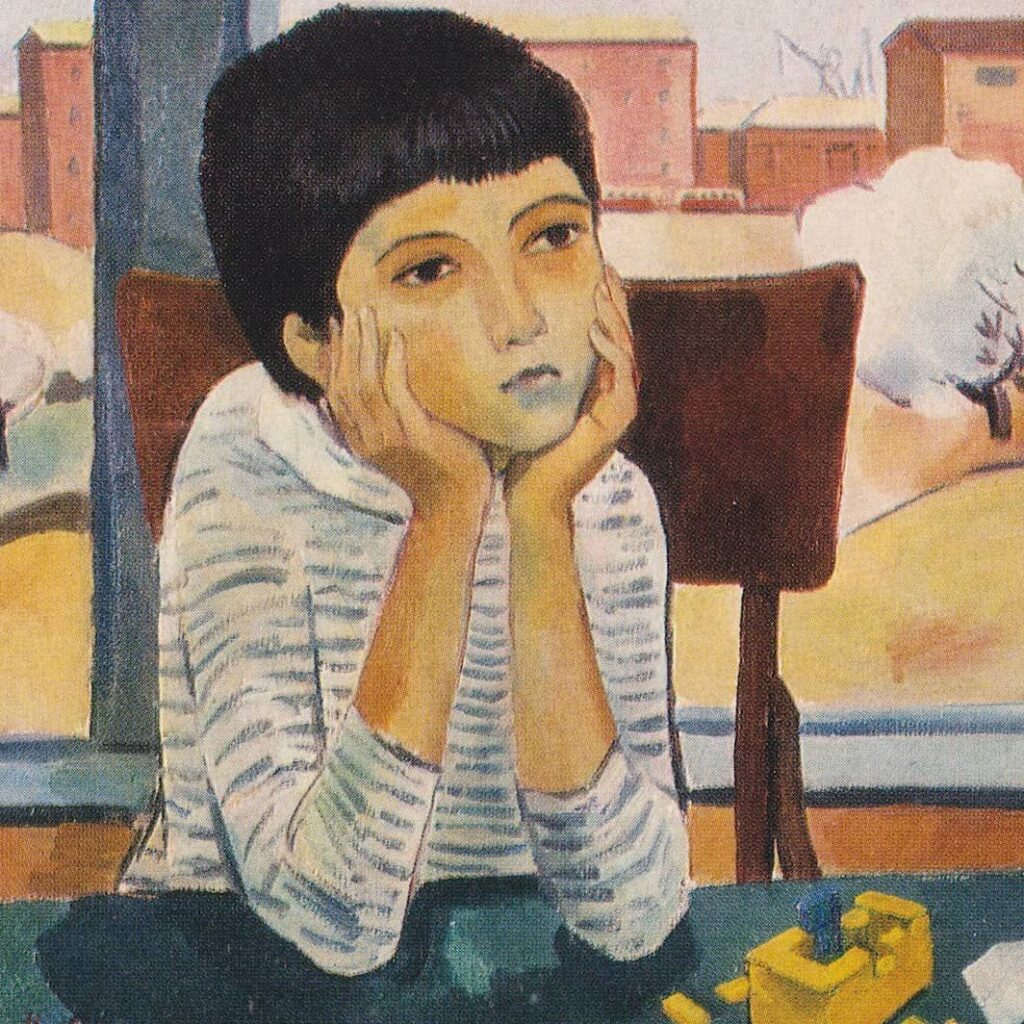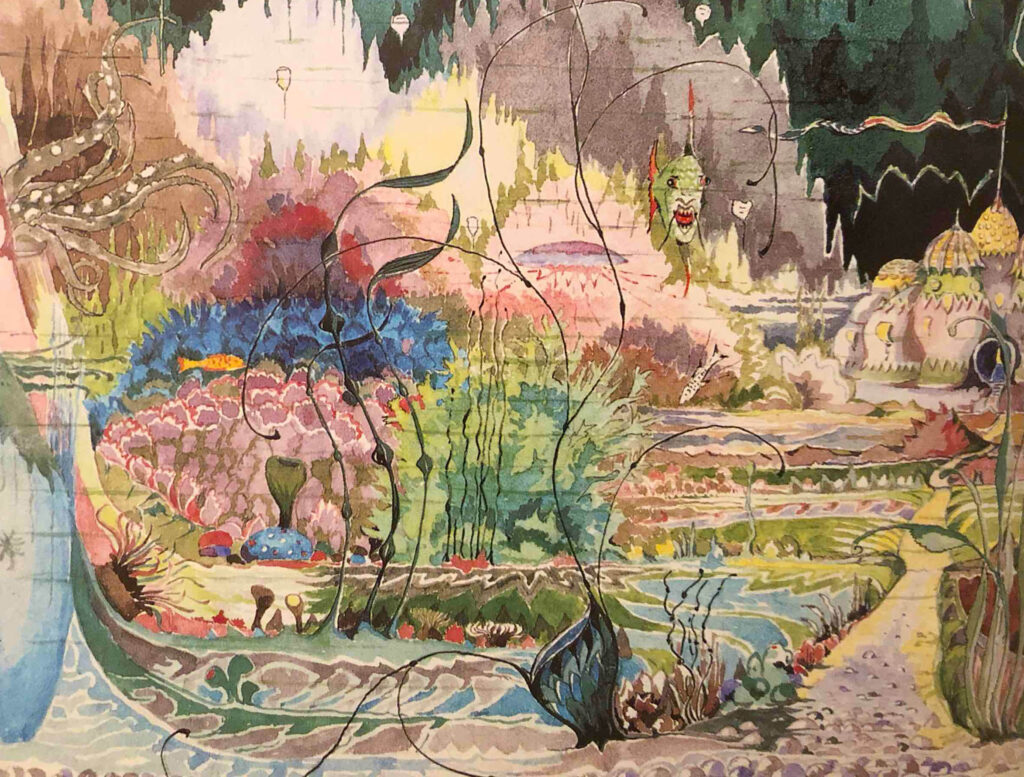My Name Is Aram
William Saroyan
1940
(An open and curious boy growing up in an Armenian community in California encounters the rich quirkiness of his family and neighbors.)

Writing from the spirit of memory. Not a record of specific memories, but effortless intuitive writing that naturally conjures the ethos, tinged with wistfulness, that can accompany the distant remembrance of simpler times. This was the inspiration of William Saroyan as he sat down, and boom, suddenly there appears what would become his best loved book of stories. With all the intense effort I put into my other books, this one (I’m imagining he thought), the one that practically wrote itself, the one in which I warned readers that nothing extraordinary would happen, this is the one?! In his own incredulous (or perhaps disingenuous) words, he “does not believe this manner of writing is the way to get a message to go high-rolling down the ages”. Its greatest value, he thought (not without satire), would be to disqualify him for membership in prestigious literary societies. One can understand why he was thinking this way. In the second half of the 1930s, having risen to the top of the charts, so to speak, with his debut collection of stories including “The Daring Young Man on the Flying Trapeze”, all eyes were on William Saroyan. Surrounded by the effervescing produce of Hemingway, Steinbeck, Faulkner, Fitzgerald, the pressure was on Saroyan to be likewise that great writer. And he did have such ambitions for himself. Yet, something drove him when starting My Name Is Aram to leave society’s gauntlet where it was thrown… or else maybe to find a different way to pick it up. My hunch (with hardly any evidence to back it up) is that he looked at this literary world he had entered, and decided that one helpful thing he could do right away is to center or root himself—to ask himself what had been important in making him who he is. Then, to search that out, or to convey it, he sat back and reminisced (pen in hand) about his humble early life in the immigrant Armenian fruit-growing community of the San Joaquin Valley, California. His goal was not to expose the suffering of the poor or rail eloquently against social ills, not to decry materialism or the threat of fascism, not to create a work of stylistic genious. Rather, his goal was simply to paint vignettes of the sorts of characters that were his family and neighbors in pre-Depression Fresno—to smile at them, to paint them in a sympathetic light, and to draw gently from them what practical wisdom and wit influenced his own development and might be worth preserving for others. Thus we have the young Aram Garoghlanian. And as the author says of himself, though he might not be Aram, he is certainly not not Aram.
“On Fairy-stories”
J. R. R. Tolkien
1938
(The realm of Faërie is no frivolity, but a place of profound enchantment, offering glimpses into deep mysteries and addressing fundamental human desires.)

“Lies, though breathed through silver”. It was September 1931. Little could J. R. R. Tolkien have guessed that this insult of myth, from the mouth of his hard-headed friend C. S. Lewis, would spur him to a rebuttal that would blossom into the most sustained and thoughtful argument for the value of fiction in the history of literature. And, while we’re at it, little could Lewis have guessed that Tollers’ argument, as they walked in a park behind Magdalen College, Oxford, would plant a mustard seed that would eventually transform Lewis into a myth-maker himself, not to mention the most celebrated writer on God (that myth of all myths) in the twentieth century. What was that argument? What path could possibly carry a wayfarer from the valley where myths are childish propaganda, to the hilltop where they are powerful elicitors of fleeting joy and hint at truths beyond our comprehension?
The Little Prince
(Le Petit Prince)
Antoine de Saint-Exupéry
1943
(A little man leaves his tiny planet to explore the universe, only to discover that the most important things in life can be found anywhere.)

As hackneyed as the term “gem” is in the description of short and delightful books, The Little Prince has got to be the epitome. What other modern story is so small, simple, beautiful, and valuable? It radiates purpose modestly, its convincing naivete managing somehow to soften sharp lessons within a sweet and personal story. An actual gem, however, can be valued by anyone, even the unworthy—those who value it only because they can use it to get something else. The Little Prince has no such utility. Its essence is a rebellion against the importance we tend to place on utility. If we find ourselves appreciating The Little Prince, it can only be because we see some light in the book’s countercultural perspective—because we love this small meandering tale according to its true worth.
The History of Mr. Polly
H. G. Wells
1910
(A man of precisely 37.5 years of age can’t seem to find success or happiness in life… perhaps he has to do something drastic.)

“HOLE!” said Mr. Polly, and then for a change, and with greatly increased emphasis: “ ‘Ole!” He paused, and then broke out with one of his private and peculiar idioms. “Oh! Beastly Silly Wheeze of a Hole!”
Thus begins an entertaining fictional biography of a man who really needs a whack upside the head– one of several greats in that odd subgenre– Tom Jones, Babbitt, and Updike’s Rabbit series, for examples. (H. G. Wells writing fictional biography? In a contemporary setting? This might surprise those of us, such as myself, who had equated him with science fiction and socialist nonfiction. But anyway…) Our protagonist is an endearing and vivid, if frustrating character, who hides his depression with funny one-liners and his poor education with deliberate mispronunciations. And, as with many colorful characters in real life, beneath the wit cowers a man who hasn’t a clue where he’s going. His path through life is that of a flat boat with untethered sails– he might as easily plummet to his death over a waterfall as drift into a homely port. Or, to use Alfred Polly’s own metaphor, he’s in a hole. And no amount of quaint phrasing and amusing epithet, no ability to make women giggle, and no success as a shopkeeper is going to hoist him out of it.



The Honorary Consul
June 17, 2019 / 1 Comment on The Honorary Consul
Graham Greene
1973
(Argentinian revolutionaries abduct the wrong political figure by mistake, and one cynical acquaintance is the only one who cares… perhaps not even he does.)
Graham Greene, though a writer of great variety, is known for his “seedy” settings (he popularized the adjective, much to his regret) and the moral dimension of his very human characters. In these respects The Honorary Consul is an enduring and typical example of Greene’s style. Early in the book the protagonist Eduardo Plarr criticizes the romantic novelist Saavedra by saying that “life isn’t like” the way that author writes. Here Greene crafts a novel according to the alternative strategy; to show what life is like, with real people encountering real difficulties. The characters’ frail humanity and the ambivalence of their commitments will encourage us imperfect readers to relate honestly to them. The author refuses to vault skyward into heroism, idealism, wonder, or joy, perhaps as these are short-lived and usually confused in the real world. The good guys are bad enough to prevent us from admiring them, and the bad guys are good enough to prevent us from demonizing them. No character has an entirely appetizing mixture of traits, but no character is thoroughly distasteful either.
Like many readers, my gut draws me towards works whose moral distinctions rise into sharper relief—I enjoy esteeming my protagonists. If we insist on this criterion, Greene will not fare well. After meeting the main characters and following them around for a while, we might question whether they are likable enough company. Such readers must take a step of faith throughout the first 100 pages or so, that Greene is telling us a story that we will really care to read. Embarking on the book was for me like hearing the first few sentences of a party yarn that we fear might not be worth the patience. However, may no reader give up before realizing Greene’s purpose! The first impression fades and becomes irrelevant as one reads onward. The grayscale characterization is not due to neglect or apathy on the part of the author. Far from it—the ambiguity represents a strategy conceived for a distinct moral purpose, as paradoxical as this seems. A novel need not be moralizing to be morally interesting. (more…)